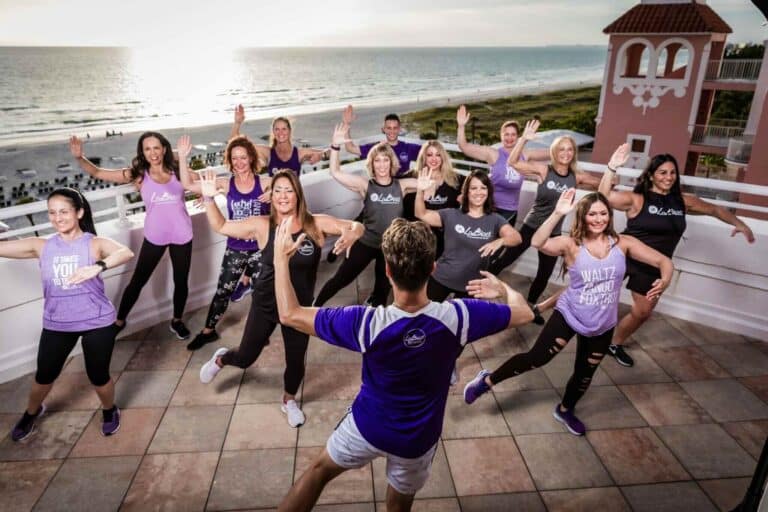As employers examine the best ways to support their employees in-person, virtually, and from a hybrid approach, employee wellbeing continues to be an issue many teams highlight as a top priority.
A recent poll from Gallup showed that across all generations employees rank “the organization cares about employees’ wellbeing” in their top three criteria for what they look for in an employer. Not all employee wellbeing initiatives are created equal, however.
Organizations looking to enhance their employee wellness offerings need to consider class variety and accessibility, social motivation, and account support. Let’s take a look at each to understand their importance in effective employee wellbeing programming.
Wellbeing Class Variety and Accessibility
Wellbeing can be defined and understood in many different ways. That said, physical, mental, social, and emotional health are all often included when exploring wellbeing, but measuring health in each area is largely up to the individual. Gartner’s Top Priorities for HR Leaders in 2021 points to a 20% increase in employees reporting better mental and physical health when employers support employees’ entire life experience.
An employee wellness program should address as many of these areas of wellness as possible, ideally in a single solution. Oftentimes, organizations will seek out point solutions that focus on one area of wellness (typically fitness or mental health) leaving employees with access to support in only one dimension. While this can be helpful in the short run, multiple point solutions can become challenging for HR teams to manage, optimize, and assess their effectiveness if only a small subset of the population is able to engage with the programming.
An additional area to consider with wellness programming is accessibility. Many programs that feature onsite speakers, traditional fitness centers, or even virtual programming with a predetermined time are unintentionally excluding many employees from participating. The diversity of an organization’s employees also includes their schedules, ability status, current fitness level, commitments outside of work, access to the physical office, and even their availability throughout the workday.
An employee wellbeing program that offers on-demand access to a wide range of class categories allows employees to choose the time, place, and category that works best for their needs.
Did you know that you can schedule classes from any of our 50 categories for a gentle reminder to take on-demand offerings? Learn more.
Social Motivation for Employee Wellness Programming
Another important ingredient to effective employee wellness solutions is social motivation and support. This support can be expressed in a myriad of ways but two crucial components are the ability to connect employees to their social circles through the program (i.e. family members, friends, colleagues) and providing easy access to a community of people with the same interests, goals, or challenges.
The reason for this is simple. One of the primary goals of a holistic wellness program is to support the “whole” employee. This often means supporting other areas of their wellbeing outside of career or professional development.
While physical, mental, emotional, and financial wellness are all important factors in supporting the whole employee, finding opportunities to connect them with their social circles and each other is crucial to encouraging healthy habits and overall employee resilience. Thus, the inclusion of family members (AKA dependents) with your wellness initiative is a tide that lifts all boats.
Employee benefits network claims as many as one in six employees are providing some level of care for aging family members. A wellness program that includes family members or access to caregiving resources is another important consideration for employee wellbeing and associated programs.
Burnalong members get four free family accounts to share with their social networks? This encourages healthy habits and supports an employee’s dependents!
Wellness Account Support
While employee wellbeing solutions can address many common HR problems–employee presenteeism, burnout, chronic condition support, or mental health–every organization will have unique goals and KPIs. It is important that your wellness solution provides you with a customized strategy so that you can more efficiently reach those goals without adding additional labor to your team.
Consider looking for a wellness vendor who will help you implement the program with tailored strategies and complement your existing initiatives without further taxing your HR team. This isn’t that big of an ask so don’t be afraid to request a wellness calendar, live or virtual events, internal marketing materials, creative suggestions to reach every population at your organization, and regular availability to answer their employees’ questions about the platform.
Additionally, you should be looking for key metrics to determine the ROI of your employee wellbeing program. One key metric to pay attention to, unsurprisingly, is employee engagement. Even a turnkey solution without a successful long-term engagement strategy will not provide the sustained engagement organizations want.
Employers should seek out partners that can tailor the implementation, onboarding, and ongoing strategy to the unique culture of their organization. As many organizations can attest, just because a benefit or resource is available to employees does not mean they are going to utilize it without a plan in place to encourage regular usage.
What Should You Be Looking for in an Employee Wellbeing Initiative?
The need for employers to support employee wellbeing has never been more essential. The failure to do so could result in the loss of talent, inability to competitively recruit, and even reduced productivity from your current workforce. A recent Microsoft survey found that 61% of bosses (often older, married, white males) said they were thriving during the last 12+ months while the exact opposite was true from women, front line workers, single people, and new employees.
In order to provide employee wellness support, employers need to create a program that is centered around a wide range of programming, social support for accountability and energy, and a customized strategy that fits the unique needs of your organization.
Burnalong is able to provide all of this, and more, with more than 13,000 classes across 50 wellness categories, four free family subaccounts, and a dedicated customer success team that will work with you to reach your goals. You don’t have to do this alone. Let us know how we can partner with you and support your employees with a holistic wellness solution.






